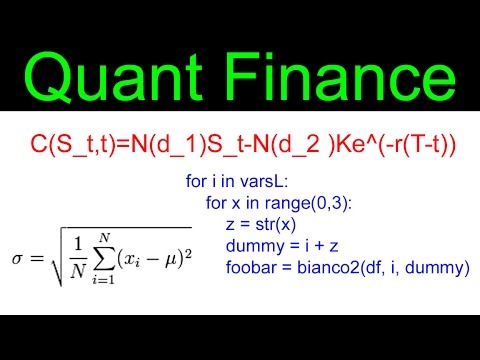

Mr. Pines has traded on the NYSE, CBOE and Pacific Stock Exchange. In 2011, Mr. Pines started his own consulting firm through which he advises law firms and investment professionals on issues related to trading, and derivatives. Lawrence has served as an expert witness in a number of high profile trials in US Federal and international courts. Can toggle the visibility of the left, right, top and bottom labels with levels’ values.
This is why chartists must use other tools to confirm support, resistance, bullish reversals and bearish reversals. Because of the relative ease traders today have at putting Gann angles on charts, many merchants don’t feel the need to truly discover when, how and why to make use of them. These angles are often compared to trendlines, however many people are unaware that they aren’t the identical thing.
The strong support and resistance levels on the Fibonacci are exact and easy to find. Traders will draw a Gann fan at a reversal point to see assist and resistance levels extended into the future. Gann technique suggests that certain angles created by the value motion can act as hidden assist/resistance ranges on the price chart. To build the Gann Fan you would start by spotting a development. Draw the angled trend line and the drawing software will populate the varied angled lines which might act as future help and resistance areas.
This move appears sharp on the log scale because the percentage move from low levels is large. The move looks less steep on the arithmetic scale because the absolute change is the same from low levels. The scaling difference does not change the starting point for the Fibonacci Fan lines or the actual retracements.
Setting Labels
To learn more about how to add this annotation to your charts, check out our Support Center article on ChartNotes’ Line Study Tools. Below, you’ll find an example of a chart annotated with a Fibonacci Fan. Elliot Wave Corrective is a basic corrective wave which forms with three waves, typically fib speed resistance fan a, b and c. Combining a basic 5 wave impulse sequence with a basic 3 wave corrective sequence yields a complete Elliott Wave sequence, which is a total of 8 waves. Elliot Wave Impulsive is a basic 5-wave impulse sequence, allows one to mark waves in the order of 1 to 5 or Roman numerals .
Once a trader identifies patterns within a chart, they can use those patterns to predict future price movements and future levels of support and resistance. Another approach to determine the support and resistance is to combine angles and horizontal strains. For instance, usually a downtrending Gann angle will cross a 50% retracement degree. The similar could be mentioned for uptrending angles crossing a 50% level. If you have an extended-time period chart, you will sometimes see many angles clustering at or near the identical value. Resistance levels can be short-lived if new information comes to light that changes the overall market’s attitude toward the asset, or they can be long-lasting.
They can be used to estimate support or resistance levels and to define the trend. The first line extends from the low to the high in an uptrend or from the high to the low in a downtrend. Fibonacci ratios, also known as Fibonacci percentages, are the ratios that show the continuous relationship between the numbers of the Fibonacci sequence. For example, the 1.618 ratio is known as the golden Fibonacci ratio and is used to predict particular patterns in trading, namely support and resistance points. Like all annotation tools, Fibonacci Fan lines are not meant as a standalone system. Just because prices approach an arc does not mean they will reverse.

Successful traders need various performance ratios and descriptive ways of viewing the results. Focus will be on moderate retracements (38.2-50%) and golden retracements (61.8%). In addition, these examples will show how to combine retracements with other indicators to confirm a reversal.
Four trend lines are then drawn from the first extreme point so they pass through the invisible vertical line at the Fibonacci levels of 23.6%, 38.2%, 50.0%, and 61.8%. To reach retracement levels, the trader divides the difference in price at the low and high end by ratios determined by the Fibonacci series, typically 23.6%, 38.2%, 50%, and 61.8%. A Fibonacci fan is a method of plotting support and resistance levels based on the ratios provided by the Fibonacci series. Fibonacci Fans are used to identify potential support, resistance or reversal points. As with the Fibonacci Retracements Tool, these reversal points assume that the move is corrective in nature.
Inserting Fibonacci Speed/Resistance Fan
The device uses the Gann Wheel as a foundation for its patterns of value and time. Gann’s trading methods obtainable, drawing angles to trade and forecast is probably the most popular analysis software used by traders. Many merchants still draw them on charts manually and even more use computerized technical evaluation packages to position them on screens. Speed lines combine trendline analysis with percentage retracement analysis. The difference between speed resistance lines and percent retracement is that speed resistance lines not only help to measure trend corrections but also measure the speed of a trend . Fibonacci fans are sets of sequential trendlines drawn from a trough or peak through a set of points dictated by Fibonacci retracements.
- Speed lines combine trendline analysis with percentage retracement analysis.
- The other two trend lines are drawn with smaller angles in an attempt to predict areas that will act as possible barriers in the event of a retracement.
- The Gann Square is among the best known technical evaluation instruments created by WD Gann together with the Gann Fan and Gann Box.
- Some of the lines might not be visible, because of the scale limitations of the chart window.
- I’ve only done basic R&D and concluded that for best results, Beginbar has to be set to nearest low.
Fibonacci clusters are areas of potential support and resistance based on multiple Fibonacci retracements or extensions converging on one price. The arcs are derived from the base line that connects a high and a low. Traders can use the Fibonacci fan lines to predict key points of resistance or support where price trends may reverse. Once a trader has identified patterns in a chart, he or she can use those patterns to forecast future price movements as well as future levels of support and resistance .
With the new feature we can now use offsets of up to 500 bars into the future when using xloc.bar_index to position lines, labels, and boxes. The information and publications are not meant to be, and do not constitute, financial, investment, trading, or other types of advice or recommendations supplied or endorsed by TradingView. Fibonacci Arcs provide support and resistance levels based on both price and time. They are half circles that extend out from a line connecting a high and low. The lines are based on the April 2010 peak and the July 2010 trough . The horizontal pink lines show the Fibonacci Retracements Tool extending from peak to trough.
Auto Fib Speed Resistance Fans by DGT
Nature relies on this innate proportion to maintain balance, but the financial markets also seem to conform to this “golden ratio.” If prices move below a Fibonacci Fan trendline, then price is usually expected to fall further until the next Fibonacci Fan trendline level. Commodity and historical index data provided by Pinnacle Data Corporation.
Gann fans are another form of technical analysis based on the idea that the market is geometric and cyclical in nature. A Gann fan consists of a series of trend lines called Gann angles. These angles are superimposed over a price chart to show potentialsupport and resistancelevels. When confirmed by support and resistance, regular trends and technical patterns, they round out the technician’s tool box. Tirone levels are a series of three sequentially higher horizontal lines used to identify possible areas of support and resistance for the price of an asset. Fibonacci retracement levels are horizontal lines that indicate where support and resistance are likely to occur.
Cloning Fibonacci Speed/Resistance Arcs
Each arc intersects the trendline at a specified distance between the beginning and end of the trendline. You can modify Speed/Resistance Arcs by specifying their percentage, number of arcs drawn, time/price relationship as well as other properties. Select the Divide Price check box to draw Fan lines based on the length of the underlying trendline. Select the Divide Time check box to draw Fan lines based on the height of the underlying trendline. This percentage determines at what point a Fan line intersects the underlying trendline.
Gann fans draw lines at different angles to show potential areas of help and resistance. Cycle theory asserts that cyclical forces, both long and short, drive price movements in the financial markets. Some will miss, some will disappear and some will provide a direct hit.
Fibonacci spirals and Golden spirals appear in nature, but not every spiral in nature is related to Fibonacci numbers or Phi. The curve of an equiangular spiral has a constant angle between a line from origin to any point on the curve and the tangent at that point, hence its name. Can somebody give some hints and images on how to apply this unique fibonacci code by Abdul kareem. Base of its theory is the idea that the price and time are equivalent, and when using a day timeframe 1 day is considered evivalentny 1ᵒ, as a result year is considered completion of a cycle. It is convenient for calculation and not practically doesn’t distort the creations executed on the big periods.
Click the arrow next to the Drawing Tools icon on the Main toolbar, point to Fibonacci Tools and select Speed/Resistance Fan. Toggles the visibility and opacity for the background fill between the levels.

